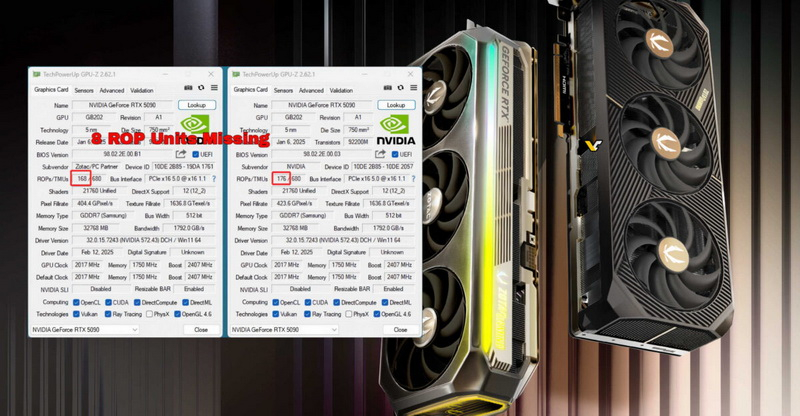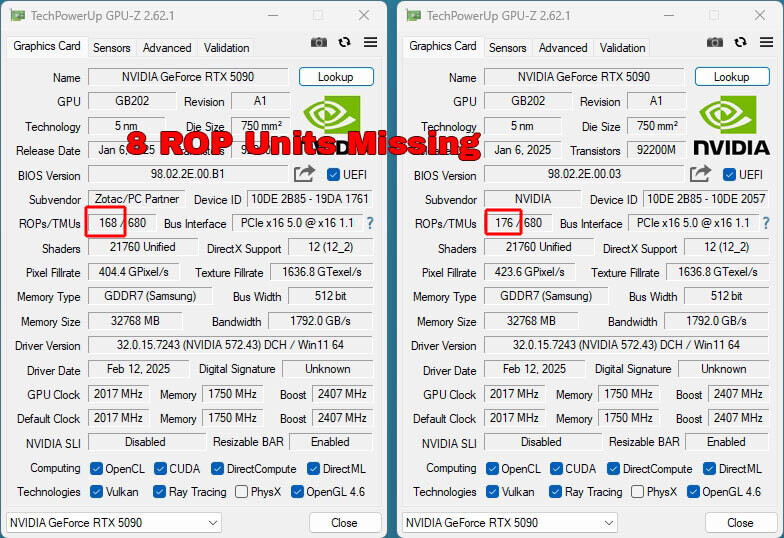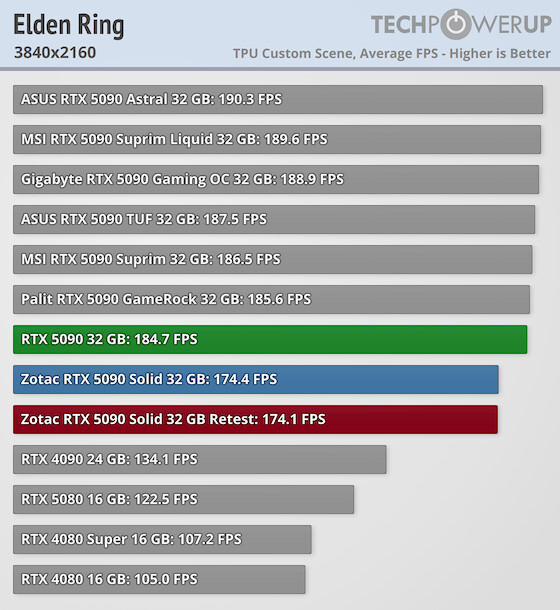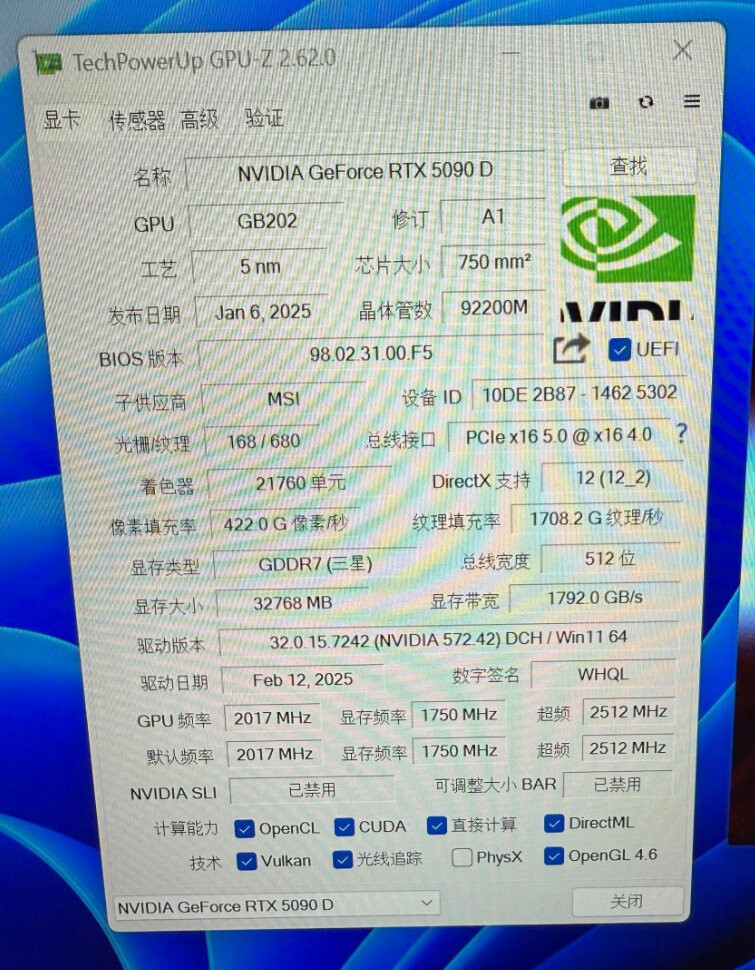One of TechPowerUp’s readers reported on the portal’s forum that the graphics processor of his Zotac GeForce RTX 5090 Solid graphics card is missing several rasterization units (ROPs). The graphics chip of this graphics card should contain 176 ROPs, but the user’s card only had 168, the GPU-Z utility confirmed. The publication was noticed by the authors of TechPowerUp and it turned out that the case is not isolated.

Image source: VideoCardz / TechPowerUp
TechPowerUp, one of whose authors is the developer of the GPU-Z utility, previously received the exact same Zotac GeForce RTX 5090 Solid card for review. A closer inspection of their sample showed that it also lacks eight ROP blocks.
ROPs (Raster Operating Pipelines or Raster Operating Units) are the components of the graphics processor responsible for the final stages of pixel processing before the image is output to the screen. Their tasks include: merging (combining the colors of several overlapping objects to create transparency and other visual effects), depth testing (determining which pixels are visible based on their depth values), anti-aliasing (smoothing edges and reducing visual artifacts), gamma correction (adjusting the brightness and contrast of the image for optimal display), display output formatting (preparing the final pixel data for transmission to the display). ROPs are one of the key components of the GPU. Their number determines the performance of the video card during classic rendering (without ray tracing).

On the left are the Zotac GeForce RTX 5090 Solid graphics card data. It is missing 8 ROPs
In its review of the Zotac GeForce RTX 5090 Solid, TechPowerUp noted that the accelerator demonstrates slightly lower performance compared to even the reference version of the Nvidia GeForce RTX 5090 Founders Edition. The resource admits that at the time of preparing the review, it did not pay attention to the lack of rasterization units. This fact was discovered only after a user with the nickname Wuxi Gamer complained on the TechPowerUp forum that the GPU-Z utility shows the presence of only 168 ROPs instead of 176 on his (the same) card.
TechPowerUp reran some gaming tests of the card. In the Elden Ring test with maximum quality settings and native 4K resolution (without DLSS), the Zotac GeForce RTX 5090 Solid was slower than every other version of the RTX 5090 tested, including the reference Founders Edition. Zotac’s card was 5.6% slower. Zotac’s version was 8.4% slower than the Asus ROG Astral RTX 5090 OC, the most powerful version of the RTX 5090 on the market.
Zotac has announced a GPU boost clock of 2407 MHz for its RTX 5090 Solid, which is in line with the reference value for the RTX 5090. In real-world usage scenarios, the Zotac card should not be slower than the FE version. Interestingly, the performance drop is not related to the clock rate — it remains high, as expected. The reason is that the GPU has fewer rasterization units available for image processing.

Zotac GeForce RTX 5090 Solid gaming performance retest. Green is the reference RTX 5090
The versions of the GeForce RTX 5090 from Asus, Gigabyte, MSI, Palit, and Nvidia itself that were tested by TechPowerUp do not have such problems. The portal also retested the cards in 3DMark Time Spy Extreme. The RTX 5090 Founders Edition scored 25,439 points in this benchmark, the version from Gigabyte with additional overclocking showed a result of 26,439 points, and the Zotac Solid version – only 22,621 points.
Shortly after TechPowerUp’s post, other users started reporting missing ROPs on some Gigabyte RTX 5090 cards, and even on Manli’s RTX 5090D (China version). VideoCardz also mentioned MSI versions.

Manli GeForce RTX 5090D (model not specified) with defective GPU
According to the latest unofficial information, the problem lies with the GB202 chip itself in the RTX 5090, and not in the graphics card BIOS – there were suggestions that the problem may be related to the fact that card manufacturers use different versions of the B1 and B5 vBIOS. According to the informant MEGAsizeGPU, a small batch of defective GPUs may have entered production. This is definitely not the news you want to hear about graphics cards whose recommended price is $2,000, and they cost almost twice as much in stores.
The easiest way to check the number of available ROPs on a video card is with the GPU-Z utility. The RTX 5090 (and RTX 5090D) should have 176 of them.
There were no official comments from Nvidia, Zotac, or other Nvidia partners at the time of publication of this article.